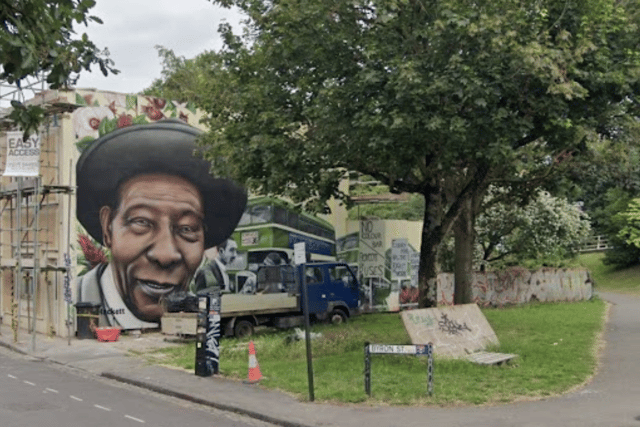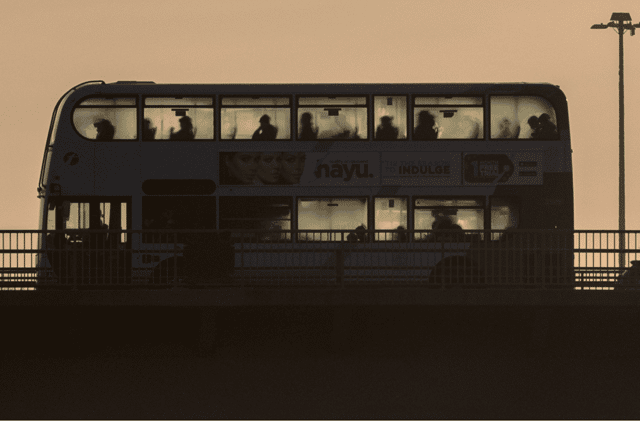Roy Hackett dies aged 93 - What was the Bristol Bus Boycott, why did it happen?
and live on Freeview channel 276
Civil rights activist Roy Hackett has died aged 93.
The Jamaican-born campaigner is famously known for his role in organising the generation-defining Bristol Bus Boycott.
Bristol Lord Mayor Paula O’Rourke tweeted her thoughts are with his “family and friends during this difficult time”.
Advertisement
Hide AdAdvertisement
Hide AdIn 1963, Roy Hackett led the country’s most influential campaign against racial discrimination with the Bristol Bus Boycott.
The Bristol Bus Boycott was significant in exploiting the reality of institutional racism, inspiring a generation of civil-rights movements and social justice activism.
While it didn’t solve the issue, the Bristol Bus Boycott laid the groundwork for the 1965 and 1968 Race Relations act. It helped set the agenda against racial discrimination in the UK - which was still legal until the late 60s.
Mr. Hackett was awarded an MBE in 2020.
Who was Roy Hackett?
Mr. Hackett was born in Jamaica, 1928.


He travelled to England in 1952 - first settling in Toxteth, Liverpool, and finally to Bristol in the late 50s.
Advertisement
Hide AdAdvertisement
Hide AdUnlike Liverpool - which had a substantial African-Caribbean population - Hackett faced severe racial abuse whilst trying to settle in Bristol. While looking for accommodation, it wasn’t unusual to see signs on windows saying “No Blacks, No Gipsies, No Irish and No Dogs”.
Roy eventually settled in St Paul’s, which is now known for its thriving African-Caribbean culture. He was a founding member of the West Indian Development Council - a support group known for setting up one of the largest multi-cultural events in Britain, St Paul’s Carnival.
Up until his death, Roy remained active in fighting racial inequality. The Jamaican High Commissioner awarded him for service in his community and in 1993 he received Royal Maundy Money from the Queen at Bristol Cathedral.
What was the Bristol Bus Boycott?
Following 1958’s race riots and the 1962 Immigration Act - which brought tougher restrictions on the entry of Commonwealth citizens to the United Kingdom - Bristol’s privatised bus service ‘Bristol Omnibus Company’ decided to ban black individuals from working as bus drivers or conductors.
Advertisement
Hide AdAdvertisement
Hide AdIn 1963, a black-led campaigning group emerged to fight the racial policies employed by the bus service. The group was composed of Owen Henry, Roy Hackett, Audley Evans and Prince Brown.
The group - now under the name West Indian Development Council (WIDC) - partnered with Bristol’s first black youth officer, Paul Stephenson.
The West Indian Development Council was made up of a group of Jamaicans living in the area. Stephenson was born in Essex to West African and English heritage.
In efforts to expose and test the policy, Stephenson proposed that the ‘well-spoken’ and ‘well-qualified’ Guy Bailey apply for a role as a bus driver. The company refused to interview him after discovering he was Black Jamaican.
Advertisement
Hide AdAdvertisement
Hide AdWIDC called for a boycott of all Bristol Omnibus Company buses. The boycott polarised residents across Bristol and later caught national attention.
In August 1963, the ‘colour bar’ was abolished, following support from political actors including Prime Minister Harold Wilson and Labour MP Tony Benn.
Why did Bristol Omnibus Company introduce the ban?


Post World War Two, Britain was a fractured nation - divided along lines of socio-economic instability. Most importantly, Britain was changing, and restructuring along with the rest of the world.
In Bristol, a large migrant population had settled. By 1962, around 3,000 African-Caribbean migrants were living in the city.
Advertisement
Hide AdAdvertisement
Hide AdThis influx of migrants across the United Kingdom unsettled a few White British communities. As a result, race riots began taking place in Nottingham and Notting Hill circa 1958.
In 1963, under pressure from unions and its members, Bristol Omnibus Company decided to introduce a ban on black and asian drivers.
Company manager, Ian Patey, revealed that staff simply refused to work with black employees. Black individuals were able to work as maintenance workers but not as drivers.
Comment Guidelines
National World encourages reader discussion on our stories. User feedback, insights and back-and-forth exchanges add a rich layer of context to reporting. Please review our Community Guidelines before commenting.
